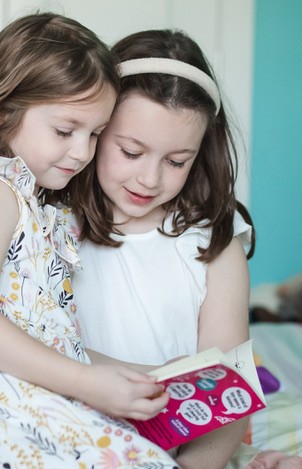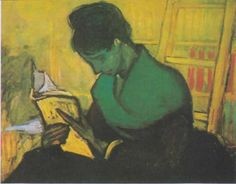Literacy Blogs
- All
- 3-cueing
- academic learning time
- academic vocabulary
- accommodations
- accountability testing
- Active View of Reading
- adolescent literacy
- afterschool programs
- alphabet
- amount of instruction
- amount of reading
- argument
- assessment
- auding
- author awareness
- automaticity
- balanced literacy
- beginning reading
- Book Buddies
- Book Flood
- challenging text
- classroom organization
- close reading
- coaching
- cohesion
- Common Core State Standards
- complex text
- comprehension strategies
- content area reading
- context analysis
- curriculum materials
- Daily 5
- decoding
- departmentalization
- DIBELS
- dictionary skills
- digital texts
- disciplinary literacy
- dyslexia
- early interventions
- effective teachers
- Emily Hanford
- executive function
- family literacy
- fingerpoint reading
- foundational skills
- graphic novels
- guided reading
- heterogeneous grouping of students
- homework
- improving reading achievement
- independent reading
- independent reading level
- informal reading inventories
- informational texts
- instructional level
- invented spelling
- jigsaw instruction
- knowledge
- leadership
- learning disabilities
- Lexiles
- linguistic comprehension
- listening comprehension
- literacy charities
- literacy policy
- literary interpretation
- main idea
- morphology
- motivation
- narrative text
- National Early Literacy Panel
- nonsense words
- oral language
- oral reading fluency
- paraphrasing
- Pause, Prompt, Praise (3P)
- personalized learning
- phonemes
- phonemic awareness
- phonics
- press and media
- principals
- prosody
- Readers' Workshop
- reading comprehension
- reading disabilities
- reading intervention
- reading levels
- reading models
- Reading Recovery
- reading research
- reading skills
- reading strategies
- reading to children
- reading wars
- reading-writing relations
- remedial reading
- rereading
- Response to Intervention
- Scarborough's Rope
- science of reading
- seatwork
- semantics
- sentence comprehension
- sequence of instruction
- set for consistency
- set for variability
- shared reading
- shared reading
- sight vocabulary
- simple view of reading
- Simple View of Reading
- small group instruction
- social studies
- sound walls
- Special Education
- speech-to-print phonics
- spelling
- stamina
- summarizing
- Sustained Silent Reading
- syllabication
- syntax
- syntax
- testing
- text complexity
- text interpretation
- text reading fluency
- text structure
- theme
- think-pair-share
- trauma
- visualization
- vocabulary
- word walls
- writing
- zone of proximal development (ZPD)
Is digital text a good idea for reading instruction?
Teacher question: I’ve heard that having students read digital texts is a bad idea, but our school has purchased tablets for everybody and wants us to use these for much of our instruction. What say you? Good idea or bad idea?RELATED: Knowledge or Comprehension Strategies -- What Should We Teach? Shanahan responds: Generally, research has found that digital books are read with lower comprehension and more mind wandering (Clinton, 2019; Vargas, Ackerman, & Samerón, 2018). Admittedly, most evidence on this comes from studies of college students. However, even when the studies have focused on elementary age students, the results are the same. Kids ...
Knowledge or Comprehension Strategies -- What Should We Teach?
Teacher question: Are we supposed to teach reading strategies or not? I keep coming across contradictory information. Some writers say the research supports strategy teaching and some say that we should teach background information instead. I respect your opinion. What do you think?RELATED: Can we really teach prosody and why would we want to? Shanahan response: Many studies – hundreds actually – have shown that teaching comprehension strategies can improve reading comprehension (Filderman, Austin, Boucher, O’Donnell, & Swanson, 2022; National Institute of Child Health and Human Development, 2000). That’s a pretty strong argument for teaching strategies. That’s why I’ve taught them to students myself. That’s why ...
Can we really teach prosody and why would we want to?
Teacher question: How expressive should young children’s reading be? We are told that oral reading fluency consists of accuracy, rate, and prosody, but our monitoring tests only consider accuracy and rate. Does prosody matter in first and second grade and if it does how do we measure it?RELATED: What is linguistic comprehension in the simple view of reading? Shanahan responds: Experts have long accepted the idea that oral reading fluency (ORF) or, these days, “text reading fluency”, improves simultaneously with reading development. As readers progress, they can read more words accurately, they are able to do this with less conscious effort (automaticity), and their ...
What is linguistic comprehension in the simple view of reading?
Teacher question: I am hoping that you can clarify a question that some of us are debating. I've sought out the wisdom of Kelly Cartwright and Katie Pace Miles as well. Can you clarify the difference between language comprehension and listening comprehension? And where does linguistic comprehension fit in here? I'm asking because when we refer to the Simple View of Reading, so many people use listening comprehension (which is inaccurate) but this leads to the question of what are the nuances or subtleties of them all! Thank you!RELATED: How I Teach Students to Use Context in Vocabulary Learning Shanahan responds: Awhile back, I posted a blog that dared mention that ...
How I Teach Students to Use Context in Vocabulary Learning
Teacher question: I recently read an interview that you did. When you talk about kids needing to recognize when they don’t know a word and how to figure it out – did you mean to leave them on their own to do that? When you mention ‘passive scaffolding’ it makes me think you do. I know a lot about vocabulary instruction and my view of passive scaffolding as a first-line technique is pretty dim. Glossaries or dictionaries are frustrating. What kids need is to be able to integrate relevant aspects of word meaning into the context to come up with an ...
Why I Encourage Teaching Children to Read Disfluently
Teacher question Our school is trying to follow the science of reading. We are teaching phonemic awareness and phonics in Grades K-2 and assessing student progress in those skills throughout those grade levels. However, we don’t begin to assess or teach fluency until mid-first grade. Are we doing it right?RELATED: What about the new research that says phonics instruction isn’t very important? Shanahan response: I think it’s okay to neglect fluency instruction until later in first grade, at least with most students. However, I suspect that you’re missing out on a valuable opportunity to teach your students to read disfluently. I hope I can ...
What about the new research that says phonics instruction isn’t very important?
Teacher question: Recently, I saw results of a meta-analysis that showed phonics instruction to have a much smaller effect size (.19) than many other approaches to reading instruction. Doesn’t that mean that we are overdoing phonics? If we want to improve reading comprehension it looks like it would make more sense to emphasize motivation, fluency, and inferencing than teaching phonics.RELATED: Which Reading Model Would Best Guide Our School Improvement Efforts? Shanahan responds: In 1986, Gough and Tunmer presented a model indicating that reading comprehension was the product of decoding ability (the ability to translate written or printed text into oral language – that is, ...
Which Reading Model Would Best Guide Our School Improvement Efforts?
Teacher question: I’m the lead reading coach in our school district. We want to present one of the reading models to our teachers and administrators to guide our efforts to improve reading achievement in the elementary and middle schools. Which of the models do you favor (e.g., simple view, Scarborough’s rope, active view)?RELATED: If You Want Higher Reading Achievement, You’re Going to Have to Deal with the COVID Aftermath Shanahan responds: All those models have some value… and they all miss a key issue it seems to me. Let’s first take a quick tour of those models that you are trying to choose among ...
If You Want Higher Reading Achievement, You’re Going to Have to Deal with the COVID Aftermath
Teacher question: I’m a fourth-grade teacher. This year, because of the COVID shutdowns, I’m seeing more students than ever before who don’t know how to decode. I don’t see how I can teach them what I have in previous years, and I don’t have the ability to deal with the decoding problems. Our district is making a long needed serious effort to upgrade to phonics in our K-1 classrooms, but my students won’t benefit from that. What can I do?RELATED: Shedding Light on Reading Skills and Strategies Shanahan responds: Over the past few weeks, I’ve been hearing these kinds of complaints from across the ...
Shedding Light on Reading Skills and Strategies
Teacher question: I want to clarify the definitions of reading skills vs reading strategies. I know you have written about this, but I’m still confused. I’ve read your blogs, the National Reading Panel Report, Zimmerman's Mosaic of Thought book, Oakhill et al.’s language skills, Chris Such’s book, Scarborough's reading rope, etc. I tried to summarize what those sources had to say about each of more than a dozen strategies and I found several contradictions and lots of general confusion. Some of them label background knowledge as a strategy, while others say it is a language comprehension skill. Comprehension monitoring shows a ...

-(1).jpeg)


.jpg)

.jpg)
.jpg)
.jpg)
